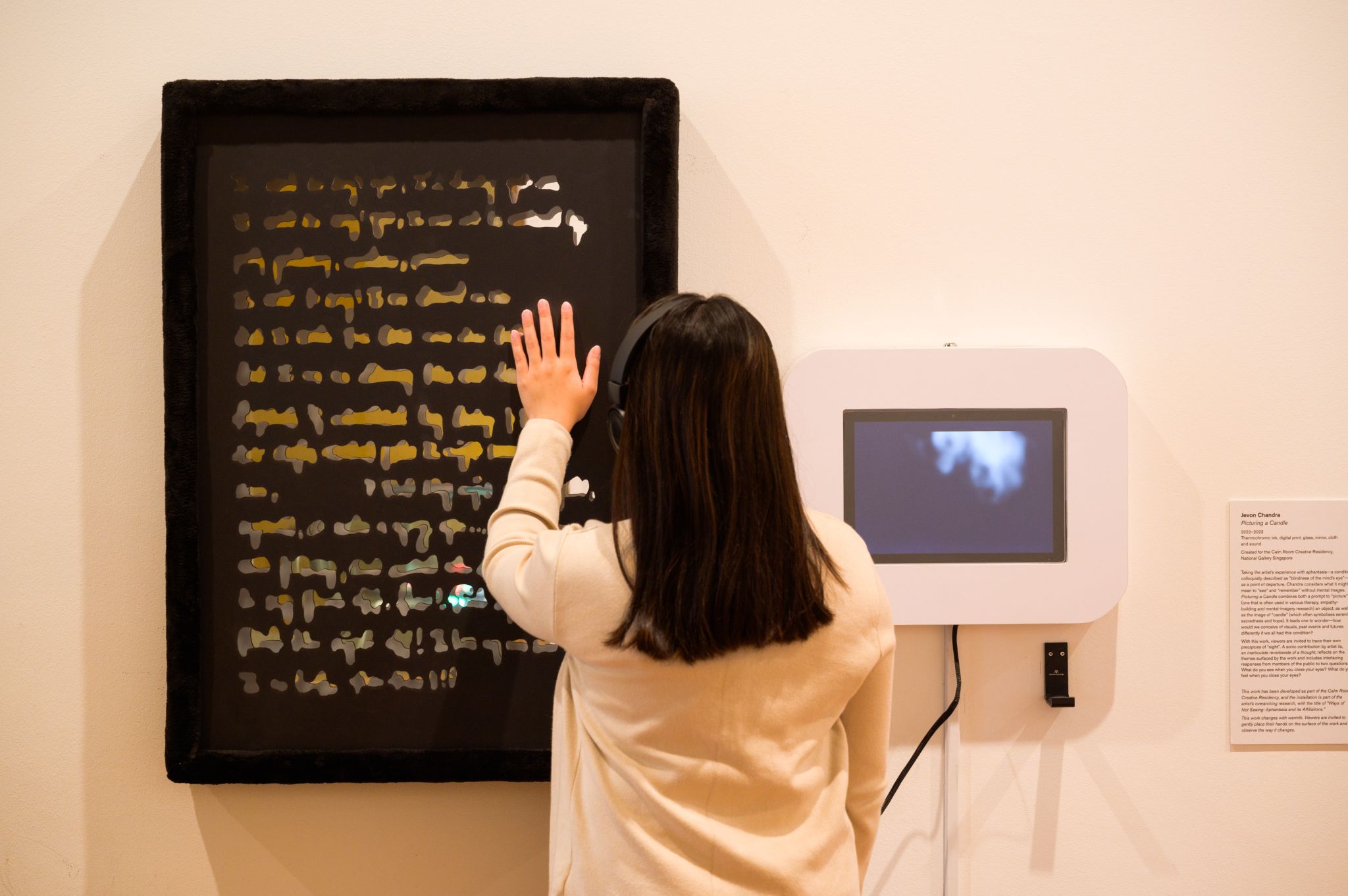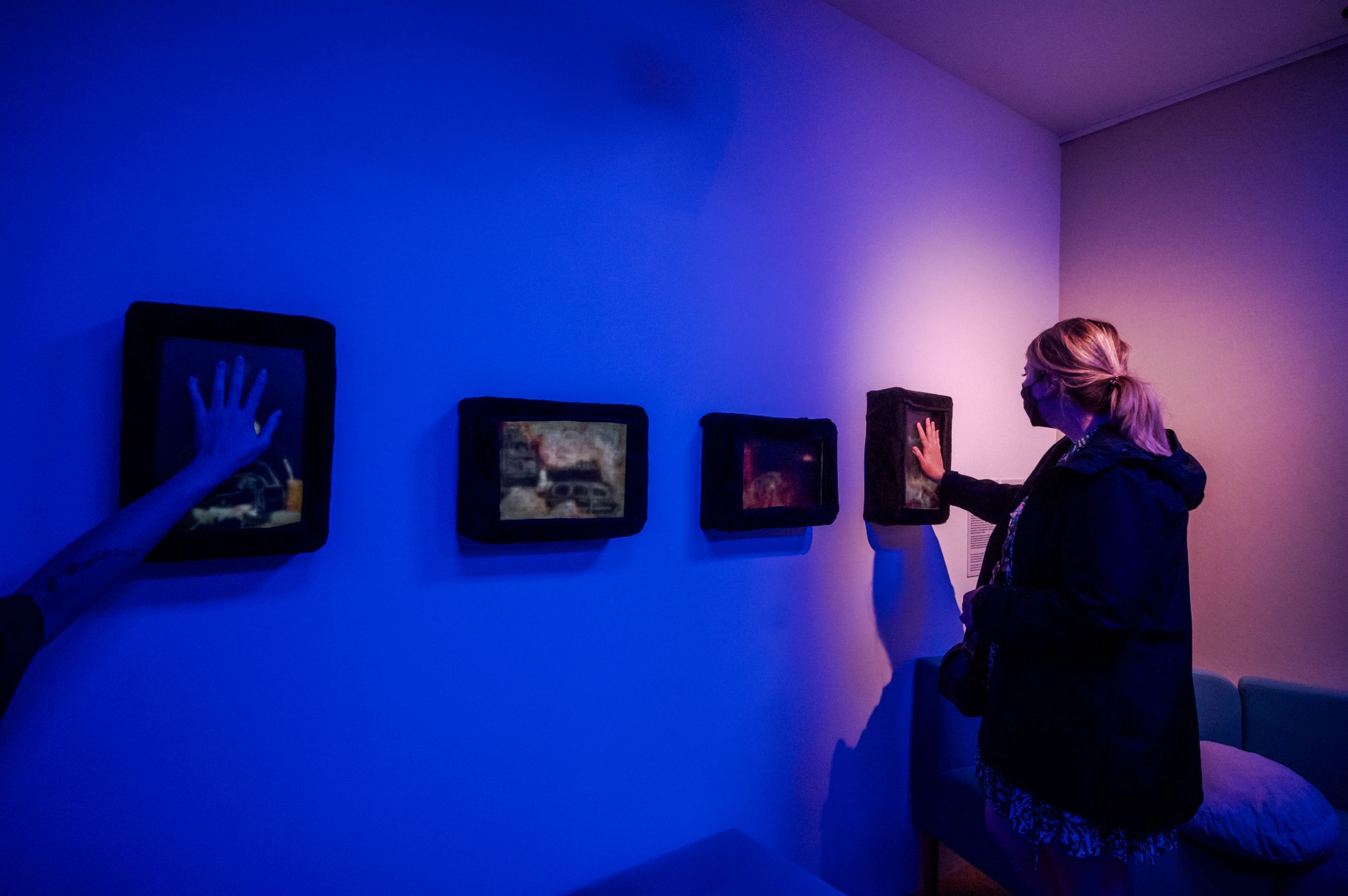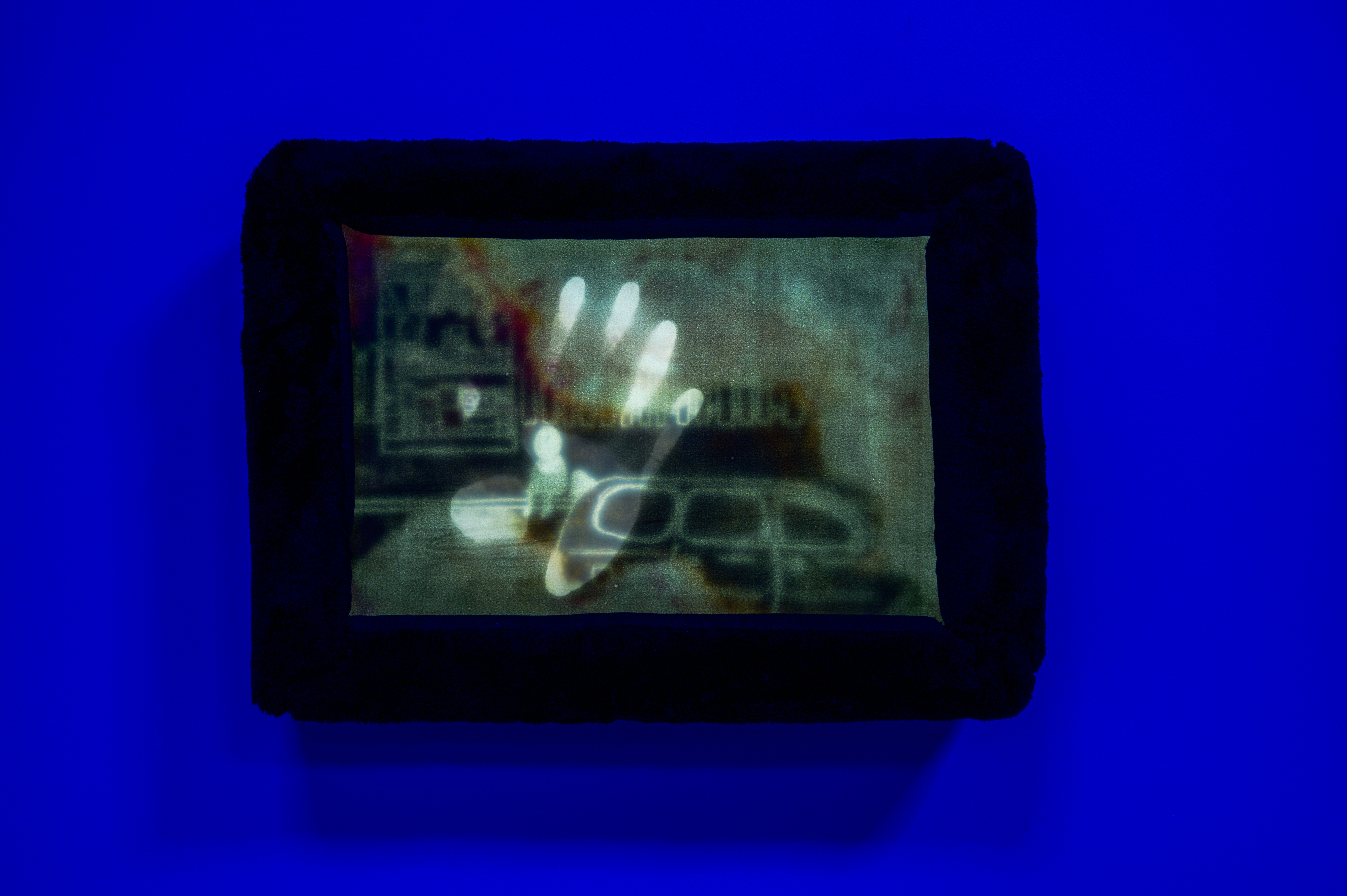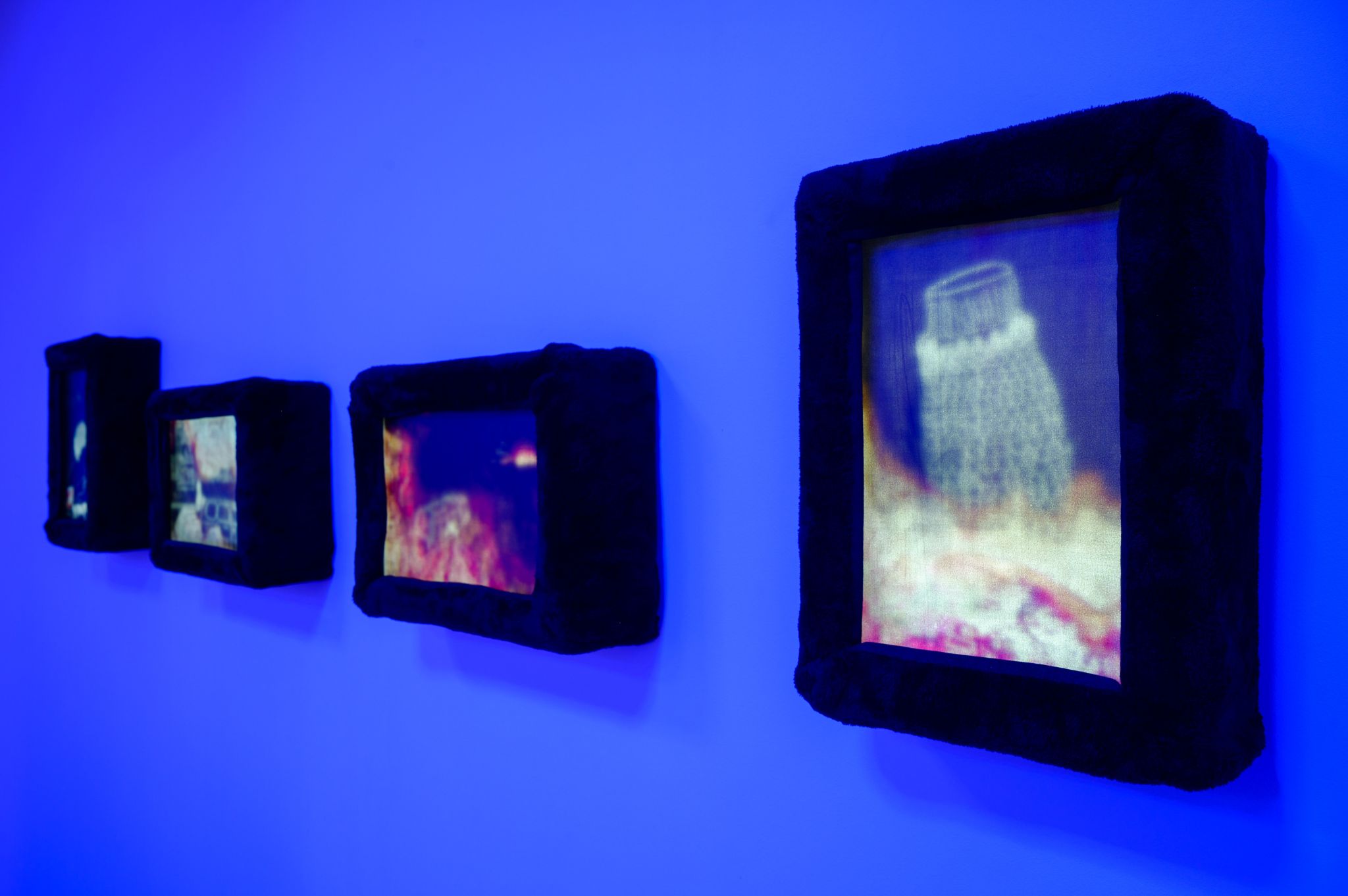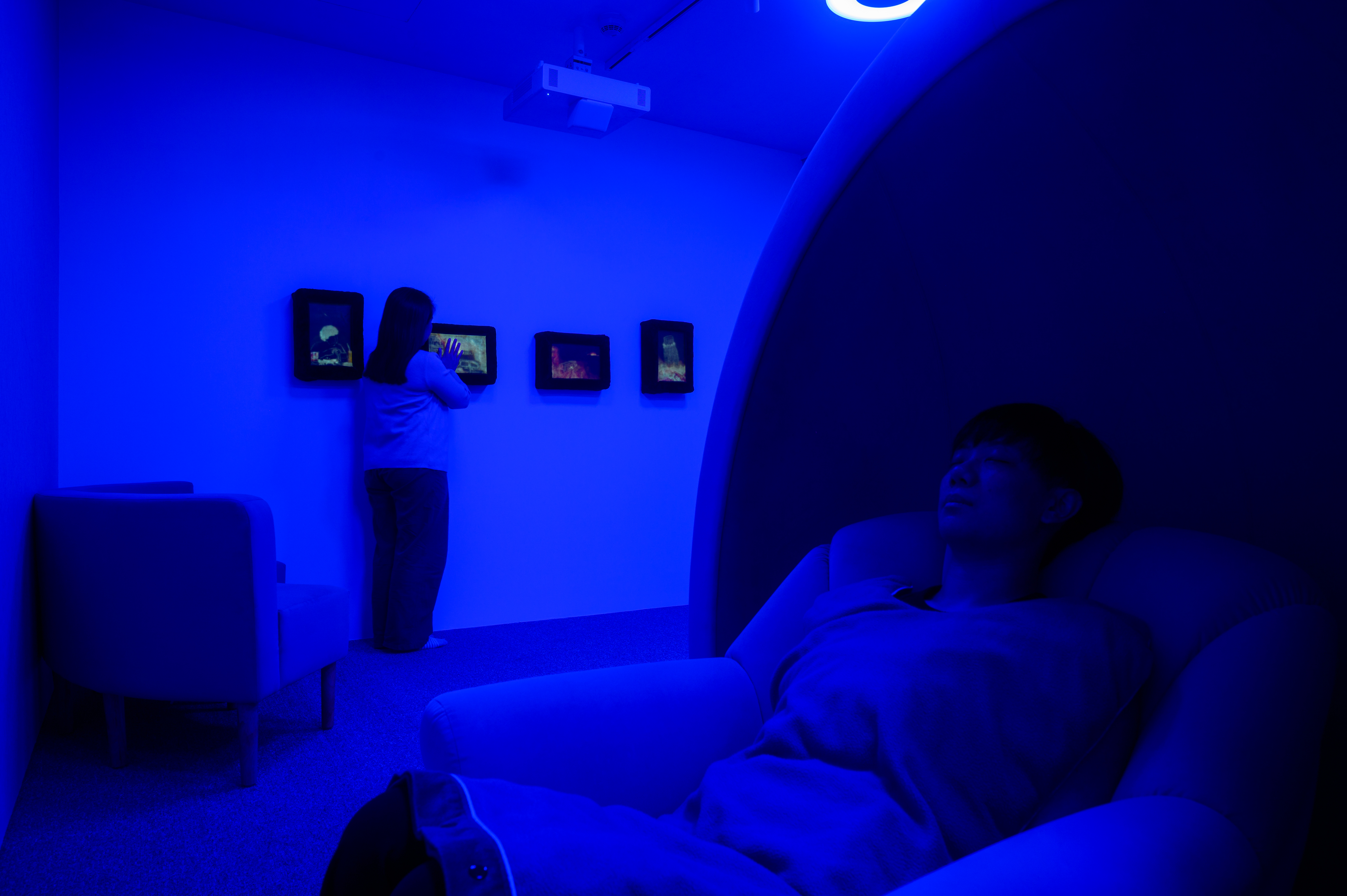Picturing a Candle
(2022-2023)Thermochromic ink, digital print, glass, mirror, cloth, sound
When asked to think of a person, place or thing, most people are able to conjure some kind of picture in their head. However, aphantasia is a condition where this mind’s eye is blind.
Taking aphantasia as a starting point, the artist (who has this condition) considers what it might mean to ‘see’ and ‘remember’.
︎
Picturing a Candle combines both a prompt to “picture” (often used in various therapy, empathy-building, and mental-imagery research) and the image of “candle” (often associated with serenity, sacredness, and hope); to wonder — how might someone with aphantasia conceive of objects and past events? In what other instances might we all struggle to visualise, understand, and hope?
This work draws loose scaffolding from the Vividness of Visual Imagery Questionnaire (VVIQ), a test that measures one’s ability to make mental images, typically used as a preliminary test for aphantasia. In the test, participants are tasked to try visualising: a dear person, a familiar shopfront, a rising sun, and a scene in nature. The work also takes Salleh Japar’s Gurisan-Gurisan Maghrib (Lines Between Twilight) from the Gallery’s collection as a point of inspiration— a work contemplating faith and the setting of the sun: the movement from sight to blindness, light to dark, day to night.
︎
Tracing this same path of receding vision, the artist also looked at decaying photographs from his childhood in Jakarta that were damaged by the flood waters that often immerse the city, and wonders if this deterioriation can also be a place of creation. Adding gurisan (lines) into the regions of moisture and bacterial decay, the artist makes new images that both responds to the VVIQ’s prompts and approximates old memories, both of which he is otherwise unable to do fully, if at all.
All are then invited to trace their own precipices of sight, memory, hope, faith, articulation. A sonic contribution by artist ila, an inarticulate reverberate of a thought, reflects on these themes, with interlacing responses from members of the public to two questions: what do you see when you close your eyes? And what do you feel when you close your eyes?
For you too: when and how does decay—of material, memory, mood—take place? When have you been unable to “see”?
Created for the Calm Room Creative Residency, National Gallery Singapore
Links
National Gallery Singapore Creative Calm Room Residency

